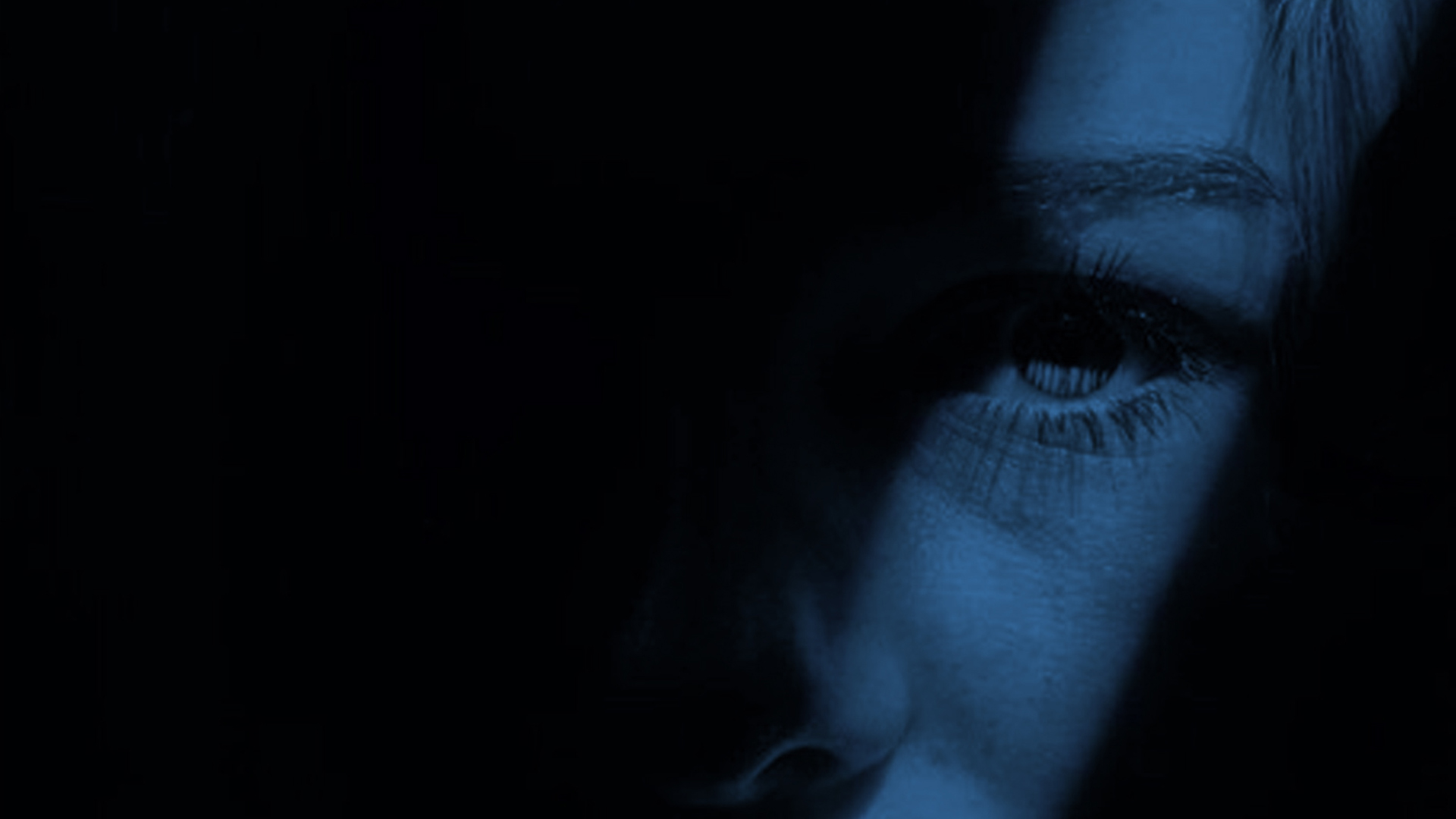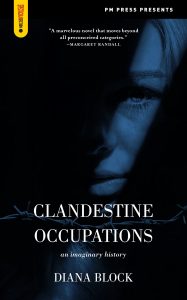By Jonah Raskin
Huffington Post
December 9th, 2015
Author and activist Diana Block calls her narrative, “Clandestine Occupations,” “an imaginary history,” though she might have simply described it as a novel, or perhaps as a roman a clef, to borrow the French phrase for a tale in which fictional characters are based on real people.
In many ways, there’s little if anything that’s imaginary about “Clandestine Occupations,” a 240-page book that’s recently been published by PM Press in Oakland, California and that looks at the history of underground movements in the U.S. from a feminist, anti-imperialist perspective.
Historical figures like Assata Shakur, the African American political exile, appear in these pages, along with real places like San Francisco and Chicago, and actual events like the Occupy Movement and the War in Iraq.
Block is understandably reluctant to divulge certain facts and basic information that might make her work less murky than it is. After all, according to her profile at the back of the book, she “spent thirteen years living underground with a political collective committed to supporting the Puerto Rican independence and Black Liberation movements.” In her world, there’s very little that’s worse than being a “snitch.”
Bloch’s profile also states that since 1994 she “has committed herself to anti-prison work, becoming a founding member of the California Coalition for Women Prisoners and the Jericho Movement.” Then, too, Clandestine Occupations is dedicated to Marilyn Buck who helped Assata Shakur escape from prison, who served a long prison term herself and who died shortly after she was released from prison in 2010. This book is also dedicated to “ancestors, comrades, friends, lovers, daughters, sons, prisoners and freedom fighters who inspired this imaginary history.”
Prisoners and fighters for human liberation seem to love Clandestine Occupations. There are blurbs from nearly a dozen of them, including Laura Whitehorn, Margaret Randall and David Gilbert, a member of the Weather Underground who joined with members of the Black Liberation Army to rob a Brinks armored vehicle in 1981 and who is still in prison after his arrest and conviction for murder.
Sylvia Federici, an Italian-born professor who taught at Hofstra University, provides a burb in which she says that “Diana Block’s new book is the first major novel taking us to the world of women who in the 1960s and ’70s opted for clandestine struggle.”
Whether that is accurate or not, isn’t clear. Members of the Weather Underground as well as historians and journalists have published accounts of clandestine organizations and groups in the era of the Vietnam War.
One of the most recent books on the subject is Bryan Burrough’s Days of Rage: America’s Radical Underground, the FBI and the Forgotten Age of Revolutionary Violence. While it isn’t popular with many radicals who once engaged in acts of revolutionary violence it doesn’t demonize them and what’s more refrains from calling them “terrorists.”
In 1978, I published a novel about fugitives entitled Underground in which the main characters are based on real people. I know from my own experience many of the challenges that face a writer who wants to tell the truth and at the same time doesn’t want to jeopardize the lives and liberties of real people.
There have been at least a dozen other novels about the underground, plus films like The Company You Keep, starring Robert Redford as an aging fugitive from the age of revolutionary violence who’s running out of time. The film features an unrepentant radical/ come drug dealer named Mimi Lure who’s played by Julie Christie.
Still, Block’s novel has a larger cast of women characters than any other work of fiction that has so far been published about the world of clandestine politics, passion and crime. (The line between criminal and revolutionary activity can be blurry if non-existent.)
There are probably too many women characters in “Clandestine Occupations,” too many events and scenes and far too large an historical backdrop. At the front of the book, Block provides a useful timeline that begins in 1970 and ends in 2019. There’s also a short list of characters that includes ten of the novel’s major players including Cassandra, Sage, Rahim, Luba and Gordon, along with the years in which they were born. Cassandra, a baby boomer, seems to be the oldest, Gordon, a millennial is perhaps the youngest.
That information helps, though not entirely because some of the characters, including Rahim, Sage and Luba have more than one name. Underground activity demands that they adopt aliases and noms de guerre, to borrow another French term.
If the reader doesn’t pay close attention, the plot and the characters can be confusing and if not overwhelming. Moreover, while the book is divided into six different sections, each told by a different narrator, the six voices tend to blur into one another. The author herself seems to be in part behind many of the characters who appear to be a blend of the real and the fictional.
What drives the narrative isn’t really a plot orstory line – there isn’t any real plot or storyline – but rather a volatile mix of ideology and emotions.
“Clandestine Occupations” is first and foremost a political novel; the characters are motivated by political ideas and political passions. They talk pointedly about political actions and movements: “the radical history of the Bay Area, the intersections of feminism and antiracism, the connections between armed resistance movements in the seventies to direct action movements today” — as one character aptly puts it.
Block’s radical feminists are also very often in a rage that not only fuels them but drives the novel itself. Rage seems to well up inside the author, too, and spills out across the pages of her book. Rage shapes the book and defines it, though it also seems to blow it up, and push it out of shape.
“Clandestine Occupations” burns with intensity and with few lulls in the action. The characters ponder critical issues and offer valuable political insights. One character observes that “prison visits cook emotions until they threaten to boil over in a sizzling, uncontrollable mess.”
Another character wonders about “the complicated questions of language – Occupy, We Are the 99%” and explains that words seem to “gloss over the contradictions between occupiers and occupied.” Block’s language can be vivid as when she writes about “melancholy harmonies turned into discordant dirges about government plots and planetary destruction” and about “grains of terrible truth sprinkled amid paranoid delusions.”
Any single character would have been enough for a hefty novel. Any one historical moment from the 1970s to the 2010s would have provided enough fodder for an explosive narrative.
Block has jammed too much into her story. The reader can feel like one of the characters who says, “I was losing my foothold.” She goes on to say, “A former-fugitive lesbian mother, working as a secretary with a preadolescent son who had a voracious interest in the earth’s geography and an uncanny knowledge of radical history.”
There’s enough information in that single sentence for an epic narrative.
On the back cover of the book there’s a blurb from Laura Whitehorn who says, “Diana Block’s novel shows why well-written fiction may be the most honest and profound way to recount history.”
Maybe and maybe not! By fictionalizing history, Block has also reduced the past, created clichés and stereotypes. Sometimes non-fiction is the most compelling way to explore the past. No doubt, Block has protected the identities of radicals and their clandestine political activities, but in the process it feels like she’s omitted, mythologized and blurred a largely invisible record of risks and rewards that only she knows from the inside out and from downside up.







